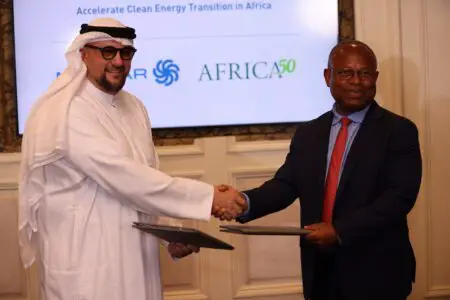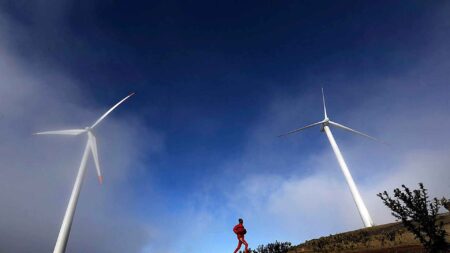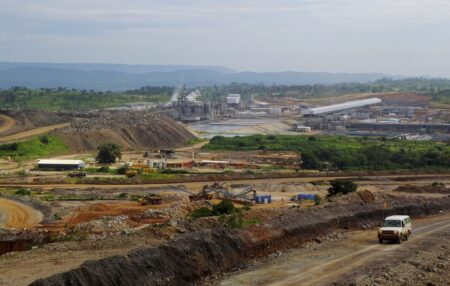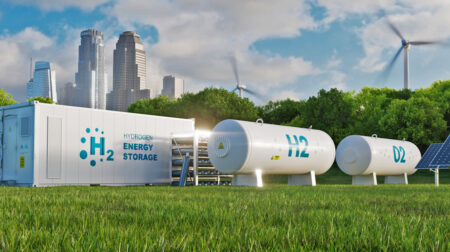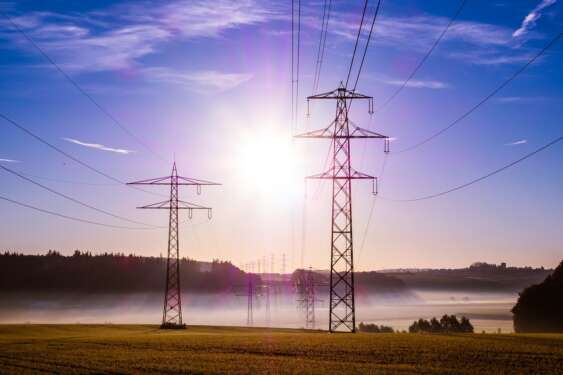- Africa’s new dawn: the rising role of digital and AI in agriculture
- Can Dangote Refinery Transform Africa Energy Ambition
- Gallup Survey: 80 per cent of Kenyan Workers Are Disengaged and Seek New Opportunities
- Madagascar Man Freed from 5KG Tumor After 15-Year Struggle
- How women in Africa are perceived and treated
- Sugar consumption in Kenya to Increase to 1.23 Million Tonnes
- Can Somalia and Turkey Oil deal Bring Change in Somaliland
- Remittances to Kenya dropped to $371.6 million in June, marking a six month low
Browsing: clean energy in Africa
- Masdar, UAE’s flagship renewable energy firm will work with Africa50 to identify, accelerate and scale clean energy projects across the continent.
- Ahead of COP28, Masdar will seek to unlock 10GW of clean energy projects for millions of people across Africa by 2030.
- The deal was struck on the sidelines of Africa Climate Summit held in Nairobi, Kenya.
Abu Dhabi Future Energy Company PJSC, known as Masdar, has joined hands with Africa50, the pan-African infrastructure investment platform, to propel the clean energy revolution across Africa, home to 1.3 billion people.
This collaboration, solidified by a memorandum of understanding (MoU) signed by Masdar CEO Mohamed Jameel Al Ramahi, and Alain Ebobissé, CEO of Africa50, is set to bridge the infrastructure funding gap and mobilize both public and private finance to fast-track and scale clean energy projects.
Africa’s journey to sustainable future
The alliance between Masdar and Africa50 brings together two powerhouses—one known …
- Only 38 percent of Tanzania is connected to electricity.
- Kenya ranks third in Africa in wind energy generation.
- Global net zero goals still off track with growing fossil fuel investments.
Tanzania does not produce enough electricity to meet its growing domestic demand. And this is despite having diverse renewable energy resources including hydro, geothermal, solar, and wind.
The country’s power sector is monopolized by state-owned Tanzania Electricity Supply Company Limited (TANESCO). The utility owns and controls almost all of the country’s energy transmission network and over half of its generating capacity.
Currently, Tanzania’s total power installed capacity is 1,602MW split into Hydroelectric (568MW), thermal (951.6MW) and 82.4MW from other renewables.
Read also: Powering Africa: Renewables safest bet for sustainable future
Solar and biofuels
According to TANESCO, Tanzania’s electricity generation comes mostly from natural gas at 48 percent. Hydro sources account for 31 percent of the energy mix. Petrol contributes 18 …
- To transition from fossil fuels to cleaner more sustainable energy, we need innovation and new technology.
- The earth has an array of minerals that carry huge energy potential that has little to do with burning.
- The World Bank: Harnessing natural resource wealth provides an opportunity to improve fiscal and debt sustainability of African countries
The race to combat global climate change challenge is offering Africa a fresh opportunity to attract investments in the decarbonization industry as countries adopt clean energy. The known patterns are gone, we now have unpredictable weather changes and ever-so-frequent catastrophic weather events all caused by global climate change.
The effect is desertification where there was vegetation, floods where land was arid, melting glaciers from the North Pole to Kilimanjaro, famine, food insecurity, and disease, all because of the energy we used to industrialize, it is time for the energy transition.
To transition from fossil fuels to …
- Green hydrogen is defined as hydrogen produced by splitting water into hydrogen and oxygen using renewable electricity.
- Green hydrogen is the future for Africa, especially in the wake of transitioning from old ways of energy production to modern systems featuring clean, renewable energies.
- The conversation on clean and renewable energy has become interesting over the years as technology and finance in the sector grows.
Africa has the potential to produce $1.06 trillion worth of Green hydrogen energy, according to a European Investment Bank report dubbed ‘Africa’s Extraordinary Green Hydrogen Potential’.
Global demand for hydrogen is projected to rise seven fold by 2050, with Egypt, Kenya, Mauritania, Morocco, Namibia and South Africa primed to ride the demand for green energy.
Another report by Africa Green Hydrogen Alliance by 2050 asserts that green hydrogen could increase the GDP of the six nations by $126 billion, equivalent to 12 percent of their GDP.…
The continent faces a stark challenge of energy availability. More than 60% of the population has no access to electricity. Moreover, a lack of clean energy for cooking remains a challenge. Even those with access to power face severe power cuts triggered by load-shedding and faults. Both triggers can be traced back to infrastructural challenges, including a lack of adequate generation capacity and aging infrastructure.
According to the World Bank’s State Of Access To Modern Energy Cooking Services Report, only 10 percent of sub-Saharan Africa has access to modern sources of cooking energy.
The effect of this inadequacy creates a ripple effect of problems. In terms of health, people are affected by diseases such as respiratory illnesses born out of using unclean energy sources.
Further, the environment suffers. In order to obtain firewood for cooking and other purposes, people are forced to cut down trees, often most indiscriminately. In …





